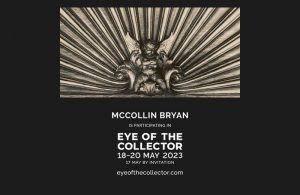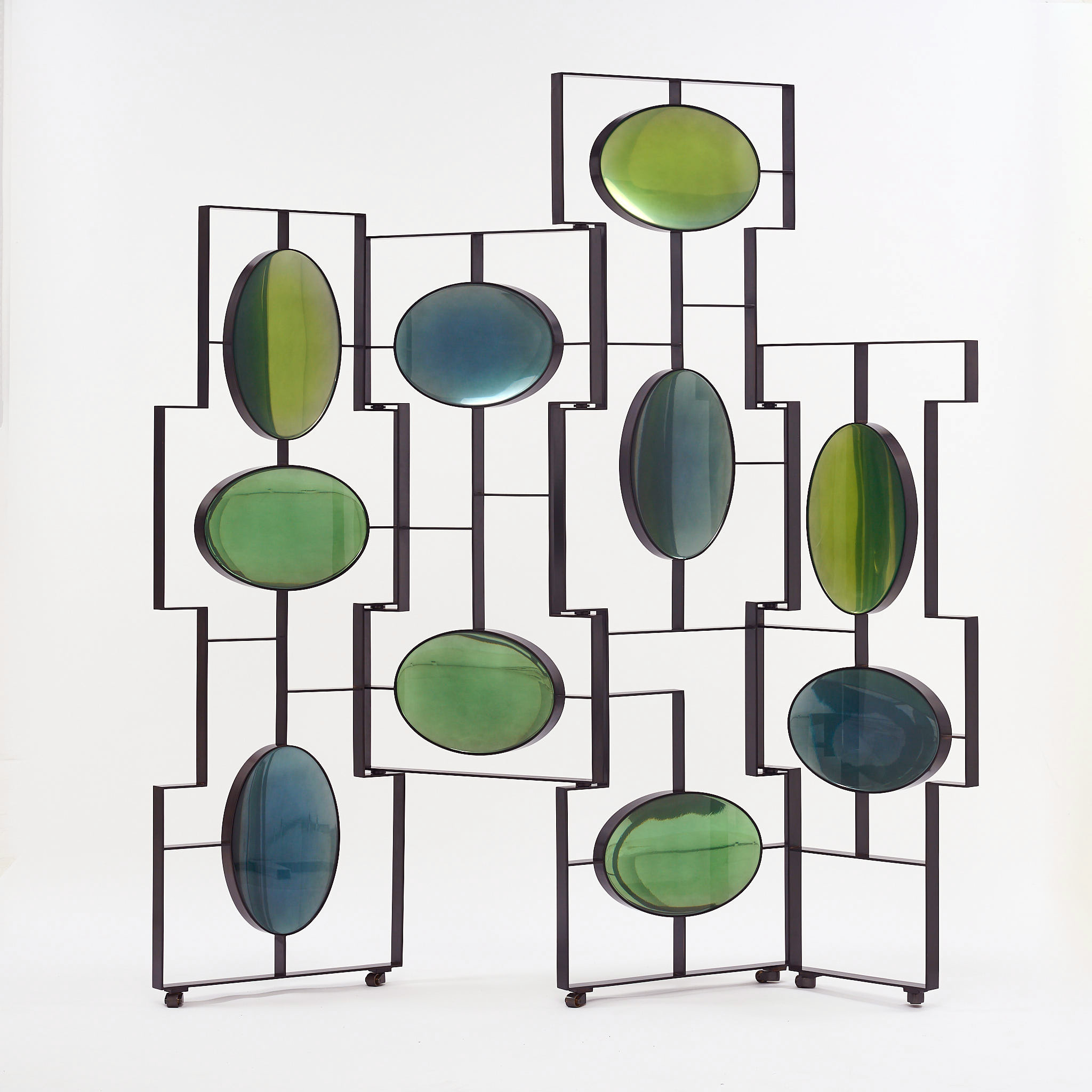McCollin Bryan is delighted to present new pieces at the ‘Eye of the Collector’ 2023. On 17-20 May, London-based design studio participates in the 3rd edition of the boutique art and design fair which presents carefully selected pieces in a curated dialogue with the architectural surroundings of Two Temple Place.
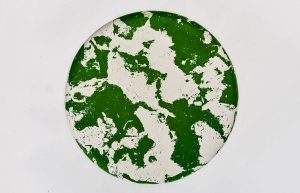
Collectible design aficionados can see their limited-edition Scagliola Trio. Cube, Funnel and Bean coffee tables in green and white were developed to compliment the gothic interior. These minimal geometric forms cast in scagliola are a nod to an era at the end of the 19th century when this fine plaster experienced a new peak in popularity and when Two Temple Place was built.
Scagliola (pronounced “scal-y-oh-lah”) is a centuries-old technique for creating surfaces that mimic fine marble and other noble materials. This decorative man-made plaster was known since Roman times and became popular in the 18th century. It can be used for sculpture, walls, columns, floors, fireplaces, table tops and bespoke furniture.
Scagliola may be visually mistaken for semi-precious stone, but it feels warmer when touched. Scagliola was never only used as an economical alternative to replace luxurious materials, or because this composite substance works on large scale without any joints or defects. It has emerged as a self-sufficient art, with masterpieces highly appreciated, that’s why our designers never call it fake, imitation, faux, or even cultured or cast marble: they call it ‘imaginary marble’.
First attracted to it due to its rarity in contemporary design, McCollin Bryan have worked for many years to produce modern, geometric forms in their version of the process in order to contrast tradition with the unconventional. The rich and earthy colours of the Scagliola are achieved using pigments mixed to a highly specific ‘recipe’ that is the result of experimentation.
The studio team spends at least a year learning to work with the material so that they can rely on intuition during the making process. The plaster is worked and pressed into moulds to be hardened and set before beginning the labour-intensive process of polishing, so the impact of the piece cannot be fully appreciated until it is finished.
The organic patterns produced on the surface of the scagliola are almost impossible to recreate, just as with natural veined marble, so every piece produced in the material is unique.
The Coffee Bean is McCollin Bryan’s most renowned scagliola piece. Its geometric shape has a sculptural impact – contrasting this with the organic surface produced by working with scagliola, this versatile piece creates a strong impression.
Suitable for use in the corporate and hospitality sectors, as well as retail and private residences. The trio of Cube, Funnel and Bean coffee tables provide flexible arrangement possibilities.
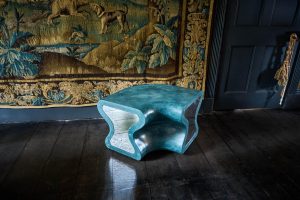
The Stria bench is another spectacular scagliola piece inspired by the process of extrusion, and the monolithic shapes that occur in the resulting form. Stria bench comprises three parts that can be arranged to create different sequences that expose the striations in the cross-sectional profile.
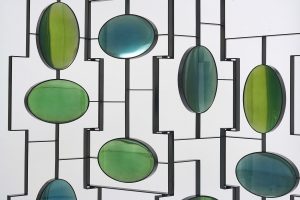
Aurora screen was initially developed for the exhibition at ‘Iconoclastes’ Galerie in Paris located near Place Vendôme, the epicentre of high-end jewellery. Embracing the location, the designers aimed to get the feeling of a giant piece of jewellery in this piece.
Named after the cinematic atmospheric phenomenon of the Aurora Borealis, or northern lights, this limited-edition piece is mimicking the ephemeral distortions that emblazon the night sky. The resin oval drops adorn the structural frame of this folding screen in an asymmetric composition, to draw light in from the room and refract it in curious dynamic patterns. Aurora screen brings the beauty of a natural phenomenon into the interior.
With a choice of five resin colourways, the screen can be customized, as are most of the studio’s creations.
Resin is another material that McCollin Bryan are best-known for. Like scagliola, it produces a striking finish, as well as encouraging a tactile and emotive response. The nature of working with it allows the team to forego industrialised processes and instead work in an instinctive, artisanal style that focuses on hand-crafting.
It was the inherent qualities of clear cast resin that attracted the founders to begin working in the material. Their ability to create prism effects and manipulate light through the material has become one of their most prominent design features.
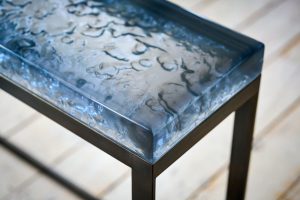
Pi Table, the very recent McCollin Bryan’s creation, is a console table with patinated brass plated base and a highly polished resin surface. Designers’ passion for casting in resins and other materials is driven by the desire to create objects that intrigue the user with evocative surfaces. Capturing soft ripples frozen in time, this piece is cast subtle depths of indigo tones. The sinuous texture provides a sharp contrast to the basic geometric form of the base.
When mixing and pouring the resins, meticulous care is taken to achieve a perfect colour and finish. The pieces are cured in moulds, then painstakingly polished to achieve a high shine. During the assembly of the resin pieces, detailed quality control measures ensure that each piece looks effortlessly constructed.
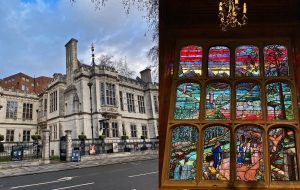
Kicking off the London art and design season, the Eye of the Collector is a new generation art and design fair, a break from the typical booth fair model. Prospective collectors have the opportunity to view and acquire extraordinary pieces across the historic rooms of Two Temple Place, one of London’s most stunning properties, as if they were in an imaginary collector’s home.
Curated viewing rooms encourage creative dialogues, in synergy with the essence of the place. Works from established artists are shown alongside contemporary new names.
